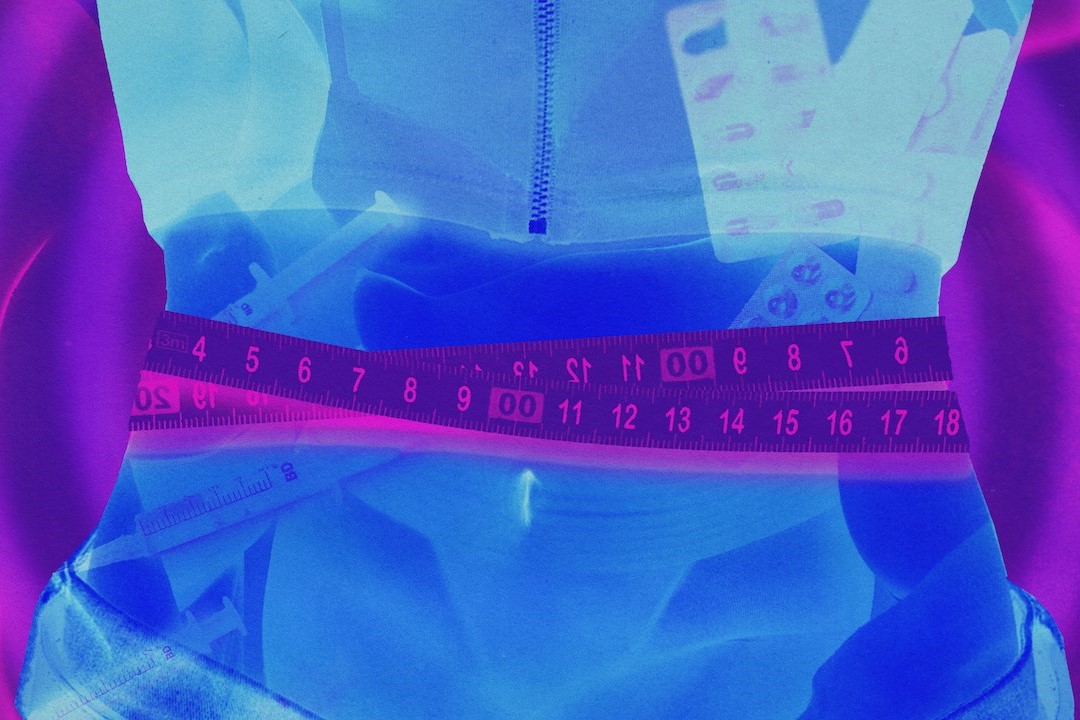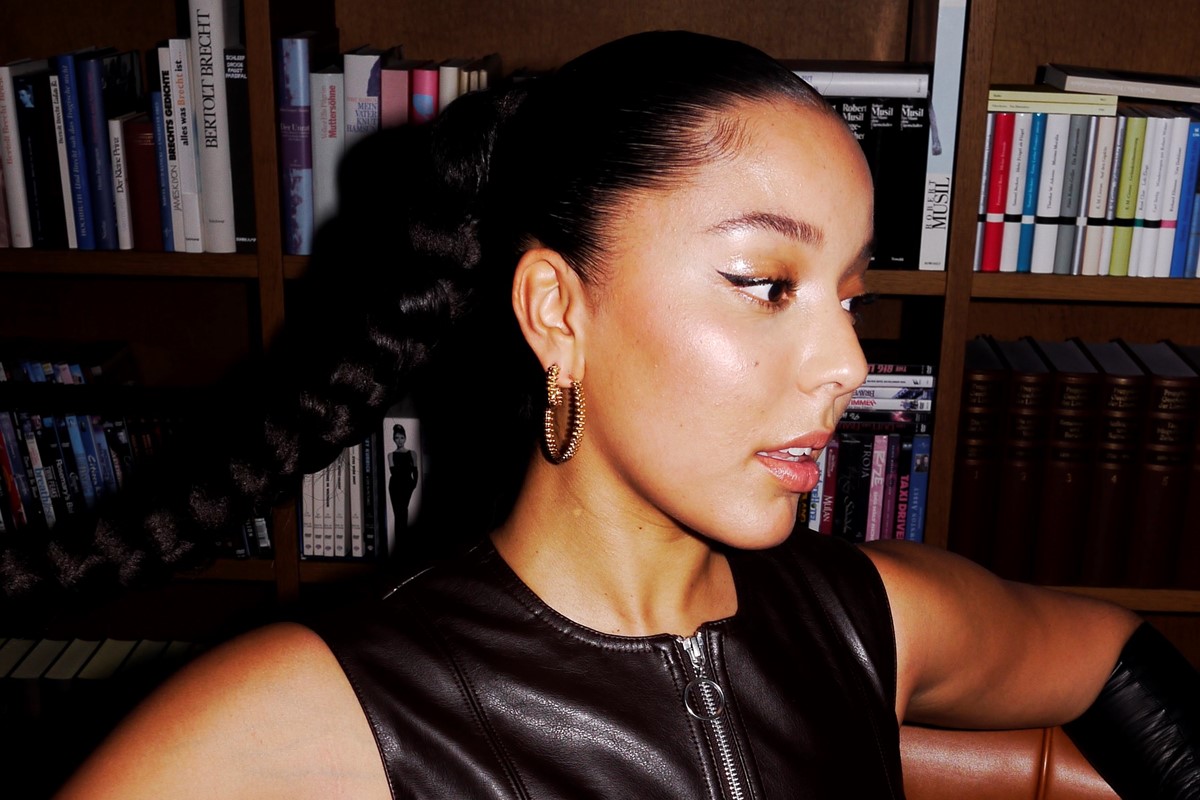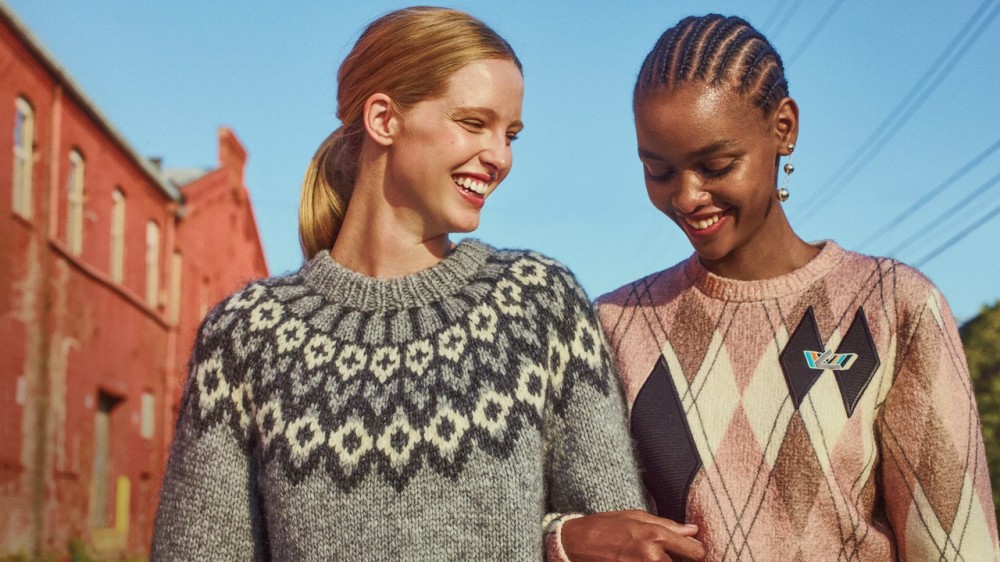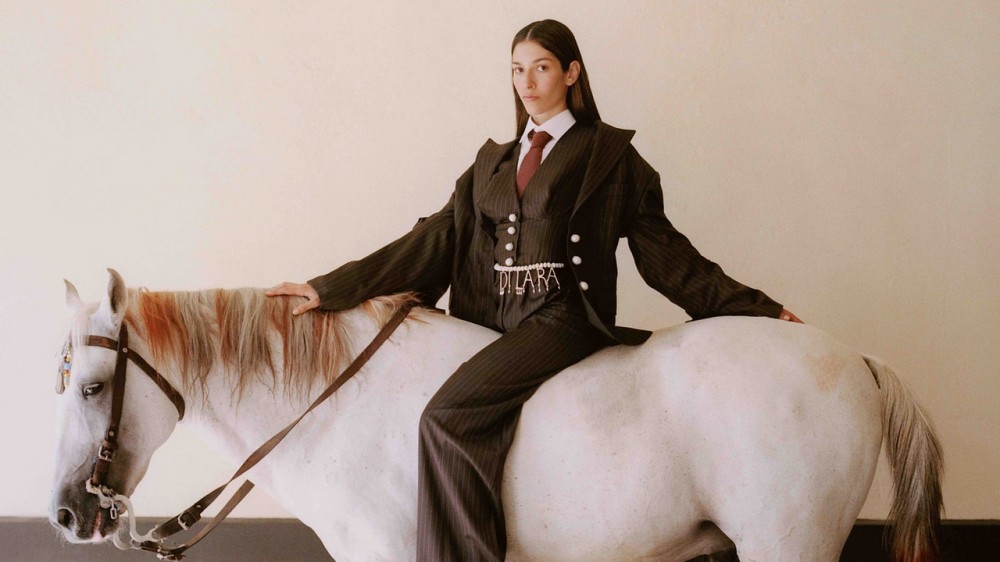
Is fashion making a worrying return to size zero?
The Y2K trend that has the industry in a chokehold may also be resurrecting the unattainable, super-slim body ideal of the era
Fifteen years ago, the fashion world was subject to a wave of public concern. The words ‘size zero’ began to appear in newspaper headlines, often in the context of the deaths of three models: Uruguayan sisters Luisel and Eliana Ramos, who died six months apart aged 22 and 18, and Brazilian 21-year-old Ana Carolina Reston. Many of the headlines, particularly among the tabloids, were sensationalist in their wording – references to eating disorders discussed in lurid terms.
This wasn’t the first time that fashion’s demand for extreme thinness had been the subject of debate. In 1997, a group of designers including Stella McCartney and John Galliano came together to condemn the growing phenomenon of so-called heroin chic, stating “We… disapprove of the fashion industry glamorising the use of addictive substances.”




Now, we tend to think of heroin chic as a physical phenomenon – an image of underweight girlhood, young and grungy and worryingly fragile – but at the time it was clearly linked with a more general sense of moral panic about the perceived allure of drugs. It was considered important enough for American presidents to have opinions on, with Bill Clinton also proclaiming in 1997 that “you do not need to glamourise addiction to sell clothing.”
The ‘size zero’ furore had more sticking power. Perhaps it was because it came off the back of this earlier wave of outrage. Maybe, too, it felt like part of a general Y2K tilt towards a particularly unattainable body type: think Paris Hilton in hip bone-skimming low rise jeans, and teen pop stars with impossibly flat stomachs accentuated by tiny crop tops and belly-button piercings.
Additionally fuelled by images of perilously thin models on the catwalk, the ensuing wave of concern was concrete enough to have actual consequences. It yielded parliamentary debates and widespread calls for change. In reality, what this largely meant was everyone in the fashion industry palming off responsibility onto one another, as editors blamed designers, and designers blamed model agents. A number of countries made lacklustre attempts to ban size-zero models from walking shows. Meanwhile, a huge amount of media ire was directed at the models themselves.
“Over the past few years as the industry has made strides towards greater inclusivity not just of body size but also age and race, there have been low level murmurs of worry about how many might view this less as a permanent change and more as a trend with an expiry date”
Now, the fashion industry would like to tell you that it’s changed. It’s a new, body-positive era, baby. Gone are the days when girls had to starve themselves to be in with a minute chance of making it big. Banished is the toxic promise that, with the desired measurements, an aspiring model might get cast in all the hot shows and land a lucrative ad campaign, so accessing the money, visibility, and status her agency promised on first signing her before she was old enough to legally drink. Right?
Recently, there have been rumblings of concern. For all the progress made when it comes to the inclusion of a range of body types in the world of high-end fashion, with models like Ashley Graham, Paloma Elsesser, Jill Kortleve, and Precious Lee gracing magazine covers and catwalks, there are signs that things may be regressing. Many lay blame at the feet of the current 00s revival. They worry that the return to skimpy dresses and cut-outs everywhere from hips to clavicles might be contributing to a renewed desire for the kind of bodies that were valorised at the turn of the millennium.
In the last month or so, these concerns have coalesced around the now-infamous Miu Miu skirt set. Composed of a tiny, belted skirt and similarly belted top or boob-skimming shirt and cable knit jumper, all hacked down to their smallest possible proportions as though a teenage girl took a pair of scissors to her uniform, the set has appeared on everyone from Nicole Kidman to Zendaya, Saweetie, Hailey Bieber, Bimini, Bella Hadid, and Emily Ratajkowski (the latter two in the more demure long skirt). It’s a design made to draw attention to the legs and stomach. There is no need for those legs and stomach to look any particular way, but it’s notable that for many celebrities, models and industry insiders it’s become a desirable outfit to frame their toned and honed bods.
“In a recent edition of her Opulent Tips newsletter, Rachel Tashjian touched on a growing sense of unease among industry peers at a potential backlash to ‘body positivity’. Despite some good steps forward, she observed, ‘just as often, the models look thinner than ever’”
Tyler McCall, editor in chief of Fashionista.com, is perturbed by what she currently sees. “I don’t think it’s necessarily a one-for-one correlation, but I can’t see how it wouldn’t seep into the minds of designers as they mine the aughts for inspiration,” she explains of fashion’s turn towards post-millenium style. “That time felt even more thin-obsessed than normal, especially towards the end of the decade, so it would make sense that if you had that imagery at top of mind, it would come out in casting as well.”
To McCall, this is emblematic of good old fashion world hypocrisy. As she pointed out on Twitter, it’s all well and good for a larger model to wear high fashion pieces on the cover of a magazine – as Elsesser did on the cover of i-D – but at the same time, brands seldom use any curve models in their shows. With Elsesser a dress size or so above the biggest Miu Miu size available, her set was likely to have been custom made.
“Dressing one or two approved fat celebrities in custom clothing is a way to be involved in the inclusivity conversation in a topical, tokenistic fashion,” she elaborates. “If brands were really interested in making significant changes, they’d start by expanding size offerings at retail for customers and then work with famous clientele to announce those sizes were available, but they don’t – which I think sends the message very clearly that they don’t actually care.”
“Personally, when I look at a show now and they haven’t used someone [who isn’t sample size], it feels a bit dated” – Anna Shillinglaw
It’s a critique that could be levelled at a number of brands. Moschino has dressed Lizzo on various occasions, but it’s hard to find their clothes at any size above a 16 in the UK (and even then, most of the offerings are t-shirts and jumpers rather than the high fashion frocks). Ditto Versace, where the size 18 options are largely limited to mumsy pleated skirts and shirts, rather than any of the va-va-voom minidresses for which the brand is best known.
When it comes to casting decisions though, it’s not all Y2K fever. “I do think overall we’re seeing bodies trending smaller again,” McCall adds. It’s an observation that’s been heard elsewhere, including in a recent edition of Opulent Tips, the cult subscriber-only newsletter from Rachel Tashjian, fashion news director at Harper’s Bazaar. In it, she touched on a growing sense of unease among industry peers at a potential backlash to ‘body positivity’. Despite some good steps forward, she observed, “just as often, the models look thinner than ever.”
Fashion thrives on the fresh and the new. It wants to revive the thing that previously looked dull, and alight on the image that doesn’t feel done. Over the past few years, as the industry has made strides towards greater inclusivity not just of body size but also age and race, there have been low-level murmurs of worry about how many might view this less as a permanent change and more as a trend with an expiry date. What happens when fashion’s permanent pendulum swing comes into conflict with the idea that progress is an ever-improving, ever-upward-climbing curve?
“I think we’ve seen a lot of positive change. But I still don’t think [seeing larger bodies on the runway] has been normalised. It’s the exception, rather than the rule” – Fran Burns
The truth is we’re not back in 2007. Casting is better. Everyone is aware that ‘this is just how it is’ or admissions of blithe blindness to the problem are not adequate explanations for why a magazine or brand’s imagery is too white or too thin. We have Precious Lee looking stunning on the cover of ELLE. We have shows like Valentino’s haute couture presentation in January that featured pieces crafted on ten different fit models of varying proportions.
As Anna Shillinglaw, founder of model agency MiLK Management explains, “We had eight models in the Valentino show. Having a fashion house like that doing it so beautifully has inspired other people.” For her curve board, this is their best season yet. “There’s a long way to go, but it’s better than it ever has been,” she says. “Normally, with many popular designers, you’d have one curve girl. This season, they were using three or four. Having been fighting for this for so long, it feels like a small win.” She thinks it’s a question of moving by inches, not miles. “Personally, when I look at a show now and they haven’t used someone [who isn’t sample size], it feels a bit dated.”
Those standard sample sizes remain a major sticking point though. Stylist Fran Burns caused a stir in 2020 when she posted a close-up photo of a slender model in a pair of Celine trousers by Hedi Slimane that wouldn’t do up. Slimane is notorious for his use of very skinny models. The experience, Burns said at the time, made her feel “like a twisted creep”. Two years on, has anything changed when it comes to samples? “No, it’s exactly the same,” she says. “I think we’ve seen a lot of positive change. But I still don’t think it’s been normalised. It’s the exception, rather than the rule.” That rule means that most clothes being produced for catwalk and editorial purposes remain designed to clad only the very thin.
“Young designers especially get chastised if they’re not inclusive in their presentations. I think it’s really unfair that there’s so much responsibility placed on [their] shoulders, when you’ve got these great big houses that do absolutely nothing about it” – Fran Burns
Burns, however, thinks blame is laid out unevenly. “Young designers especially get chastised if they’re not inclusive in their presentations. I think it’s really unfair that there’s so much responsibility placed on [their] shoulders, when you’ve got these great big houses that do absolutely nothing about it.” The next generation of designers, it seems, are meant to remedy the ills of those who went before: focusing on inclusivity and sustainability in order to build businesses that minimise harm to both people and the environment. All of that is meant to be achieved without the capital that a brand owned by LVMH or Kering has, which would make it so much easier to scale up patterns, produce larger ranges of samples, and meaningfully reshape the industry.
It also falls, she thinks, to particular models to carry the responsibility of ‘representation’. “Now it feels like there’s so much [riding] on Paloma. She’s absolutely phenomenal, as a person inside and out. She is the face of change in this discussion, without a shadow of a doubt. But it’s not enough for it just to be on her shoulders. There need to be more women.”
“Fashion doesn’t just celebrate thinness any more, thank god, but it’s still largely in thrall to it. It’s a cruel trick. Thanks to that incremental, visible change in some quarters, it’s almost easier for it to escape scrutiny elsewhere”
We live in an odd age. It almost seems a little passé now to focus so closely on an issue like fashion inclusivity (in the same way, arguably, that the embarrassing girlboss-ification of female empowerment has led many to shrug their shoulders and take equality as the given goal without actively doing much about it). Right now, there is no real outrage to capitalise on, and fewer passionate arguments for the welfare of the very young models cast for shows and shoots. But speak to anyone within the industry – or take a cursory glance at catwalk imagery – and you’ll see that those core problems remain.
Fashion doesn’t just celebrate thinness anymore, thank god, but it’s still largely in thrall to it. It’s a cruel trick. Thanks to that incremental, visible change in some quarters, it’s almost easier for it to escape scrutiny elsewhere. We can’t blame fashion alone for this. Look at any of the overlapping worlds that rely on celebrity spectacle and the power of the visual. Actresses, musicians, and influencers all, similarly, possess bodies that are relentlessly surveyed and regularly lionised for fitting into particular, predetermined categories of beauty. Ultimately, the Y2K question is something of a smokescreen. For all the nods towards progressivism and praise around the welcome widening of parameters, much of the world of image-making has merely carried on like it always has. You can’t have a pendulum swing back towards something that never went away.



